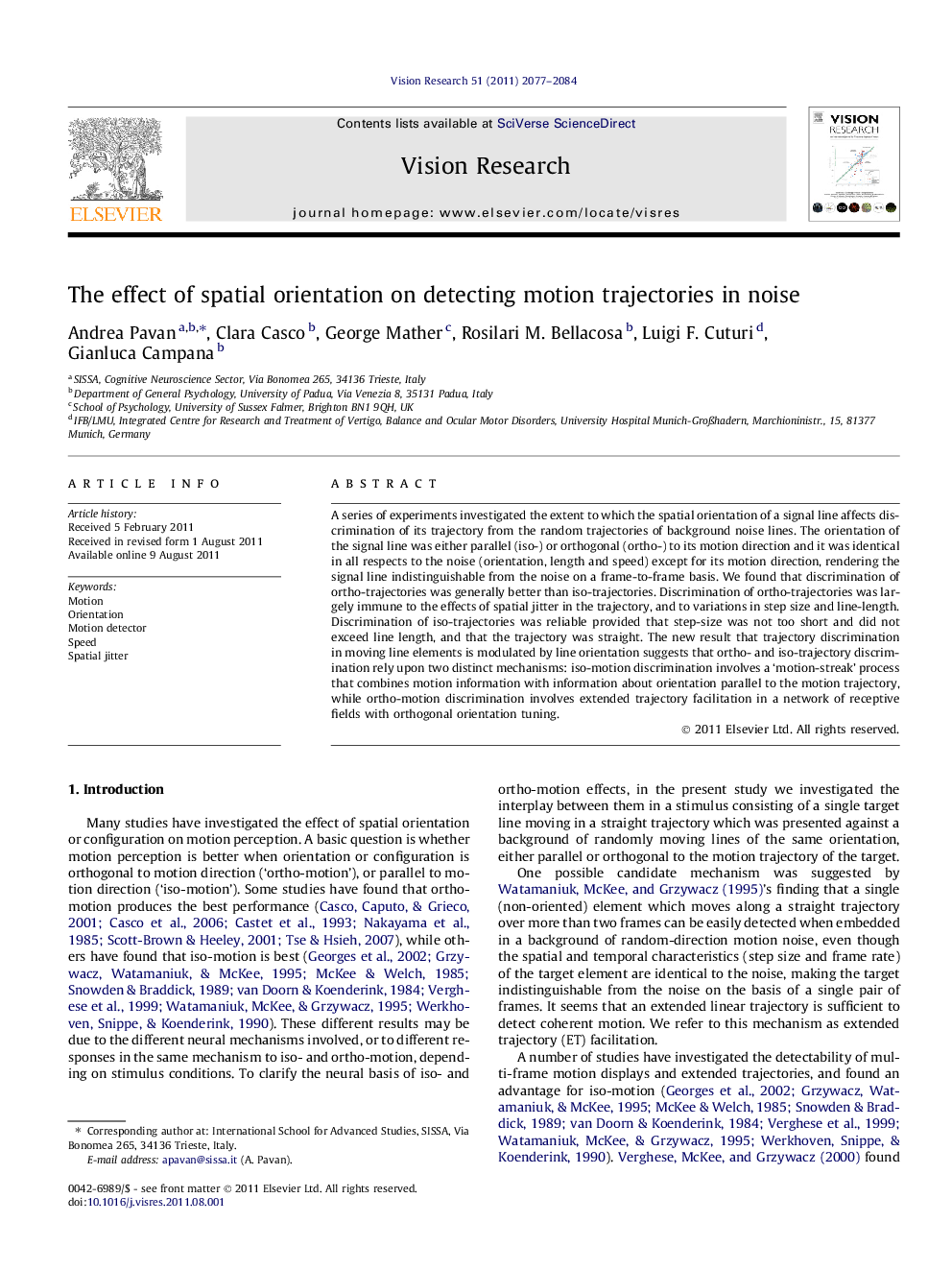| Article ID | Journal | Published Year | Pages | File Type |
|---|---|---|---|---|
| 4034264 | Vision Research | 2011 | 8 Pages |
A series of experiments investigated the extent to which the spatial orientation of a signal line affects discrimination of its trajectory from the random trajectories of background noise lines. The orientation of the signal line was either parallel (iso-) or orthogonal (ortho-) to its motion direction and it was identical in all respects to the noise (orientation, length and speed) except for its motion direction, rendering the signal line indistinguishable from the noise on a frame-to-frame basis. We found that discrimination of ortho-trajectories was generally better than iso-trajectories. Discrimination of ortho-trajectories was largely immune to the effects of spatial jitter in the trajectory, and to variations in step size and line-length. Discrimination of iso-trajectories was reliable provided that step-size was not too short and did not exceed line length, and that the trajectory was straight. The new result that trajectory discrimination in moving line elements is modulated by line orientation suggests that ortho- and iso-trajectory discrimination rely upon two distinct mechanisms: iso-motion discrimination involves a ‘motion-streak’ process that combines motion information with information about orientation parallel to the motion trajectory, while ortho-motion discrimination involves extended trajectory facilitation in a network of receptive fields with orthogonal orientation tuning.
► The orientation of a line affects the discrimination of its trajectory. ► Discrimination of ortho-motion is not affected by jitter, step size and line-length. ► Discrimination of iso-motion depends on step size and straightness of the trajectory. ► Two mechanisms underlying the discrimination of iso- and ortho-trajectories.
